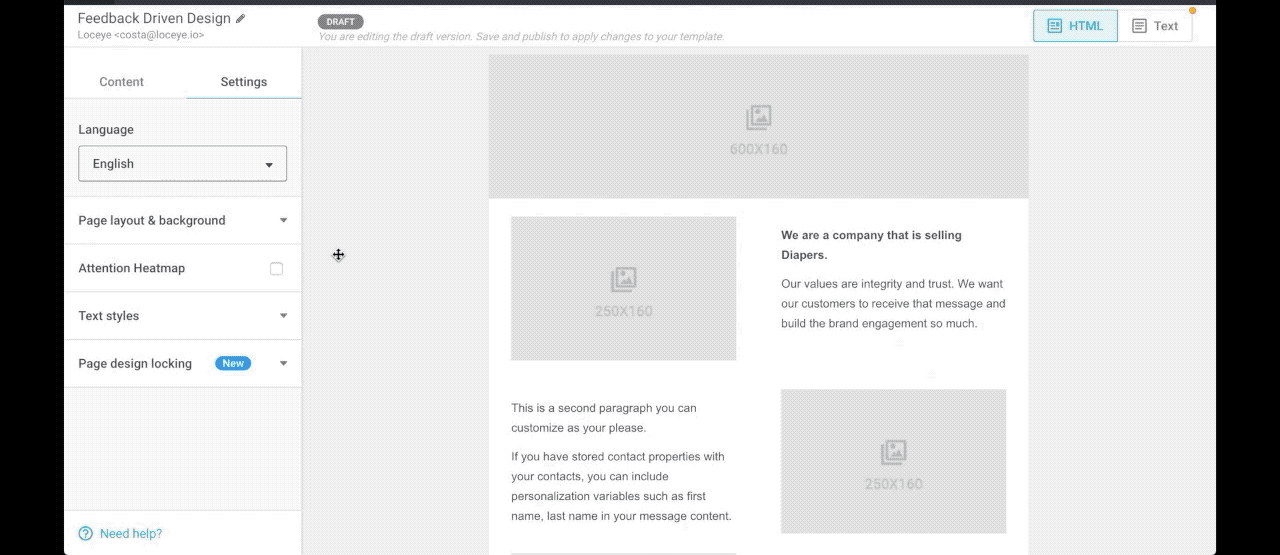
A.I. will enable Predictive Design in Creatives
Artificial Intelligence is changing the way we create content and how we design. Clarifying that by A.I. I don't mean supercomputers trying to figure out how they can help us design the best creatives the world has ever seen, but sophisticated algorithms written in order to help us approach humans more efficiently.
With A.I. and the latest changes in the tech field, Predictive Design in Creatives will soon become available and will eventually become a part of every designer's and marketers toolkit in the upcoming years. Haven't heard of Predictive Design before?
Predictive Design is a commonly used statistical technique to predict future behavior. Predictive Design solutions are a form of data-mining technology that works by analyzing historical and current data and generating a model to help predict future outcomes. In Predictive Design, data is collected, a statistical model is formulated, predictions are made, and the model is validated (or revised) as additional data becomes available. [1,2]
And by adding the term "in Creatives" we state that predictions will respond to our creative designs that consist of newsletters, web designs or ad creatives.
Let me describe the concept of Predictive Design first, with the following example.
Predictive Design - Example
Let's take the example of a copywriter named Lizzy. Lizzy just started writing an article about a tech blog. The story will be about a new technology that readers are not familiar with just yet, so she needs to be informative enough in order to keep their attention.
How can Predictive Design (PD from now on) principles apply as Lizzy is writing the blog post?
Grammarly implemented Predictive Design theory in Text Creation and absolutely nailed it.
Lizzy starts writing down the post. She defines the goals she wants to achieve, like having an informal style, she knows the audience is knowledgeable but she also has to tell a story and describe a new technology.

Grammarly instantly gives her feedback about spelling errors
Grammarly is helping her in two ways. It corrects any syntax/grammar errors Lizzy makes instantly but also predicts a score for the post in respect of the goals Lizzy has set. With quantification, Grammarly achieved a great victory over every other competitor. They do not only correct you, but they push you to become better and achieve a greater score, to strive for perfection in copywriting. Grammarly makes you a high-performing athlete.
With quantification Grammarly achieved a great victory over every other competitor. They do not only correct you, but they push you to become better and achieve a greater score, to strive for perfection in copywriting. Grammarly makes you a high-performing athlete.

Grammarly is setting the game for Predictive Design in Text Creation, by quantifying how your content will perform
Why Predictive Design is not yet in the Creative industry?
The text is easier to handle, more deterministic and extremely efficient when it comes to data transfer (between the "AI"s servers and the client).
Creative designs, on the other hand, are images, which inherently means more data. Moreover, designs are less deterministic on how we, humans, interpret them. How we define a "good" image or a "pleasing" landing page, how do we define aesthetics? These are all questions that are way more difficult to answer. In text analysis one can always rely on grammar rules; but is there an equivalent ground truth when it comes to images?
In Loceye, the company some talented folks and I founded, we try to tackle this problem lately by reverse engineering the way we perceive designs [3,4,5]. This problem has various parameters we have to define and explore diverse metrics that behave differently depending on the design industry in question.
Newsletters
Let's take an example of the creation of a newsletter, from a marketer's point of view. I am creating a newsletter and I need to place a photo of a baby as shown in the gif below. Which baby photo will help us grab the attention of the recipient and how does the font changes the attention distribution? So far the newsletter providers are treating the content of a newsletter as a black box. Wouldn't it be awesome (and helpful) if we could know a priori the attention distribution and design our newsletter with respect to the feedback we get?

Design with Saliency in mind, which elements will get the most attention. Disclaimer: This is a screenrecording from the future 🤖
This is an example of PD in newsletters. Knowing Attention Maps would help marketers design better newsletters with more engaging content. As you can see in the example, placing the baby looking towards the text, increases the probability that the user reads the text, what the company wants to convey to their clients (notice how the text area is red).

As you can see in the example, placing the baby looking towards the text, increases the probability that the user reads the text, what the company wants to convey to their clients (notice how the text area is red).
The key metrics in Newsletters can be Attention Maps, that means predictive Eye Tracking models and Clarity Scores, describing the clearness of the design. The same can apply on Websites' designs. For Advertising we need a bunch of other metrics, all following the same philosophy.
Conclusions
We, as designers and creators, are close to reaching our maximum potential right now with all the Design tools that help us deliver value to our companies. MailChimp, Unbounce, Sketch, Adobe Suite and a bunch more digital content creation tools are helping us with a ton of features. So far they are not "smart" enough to guide us although.
One thing is for sure. The future in creative design is unpredictable and it has almost arrived. It holds many wonders (technological or not) but I am personally convinced that Predictive Design is one of them.I would love to hear how Predictive Design can help you become a better designer or marketer. Feel free to comment your ideas below. Trust me we value them more than you think!
Lastly, if you enjoyed this article, feel free to share it with your friends that are familiar with Design/Marketing.
References:
- http://www.eecs.harvard.edu/~kgajos/papers/2014/reinecke14visual.pdf
- https://www.youtube.com/watch?v=13YZPndRJdE
- http://web.mit.edu/zoya/www/docs/predImportance_final.pdf